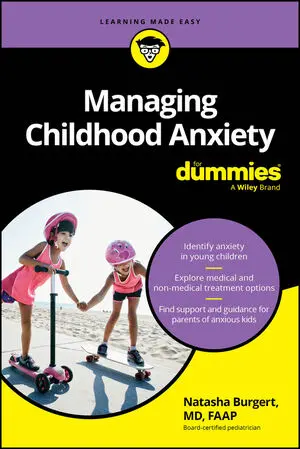 © Joice Kelly / Unsplash.com
© Joice Kelly / Unsplash.comDo you have anxiety?
Anxiety appears in different forms for different folks. You may find that anxiety affects your thoughts, behaviors, and feelings. Some of the more common symptoms are listed as follows:
You’re thinking anxiously if you’re . . .
-
Making dire predictions about the future.
-
Thinking you can’t cope.
-
Frequently worrying about pleasing people.
-
Thinking that you need to be perfect.
-
Having excessive concerns about not being in control.
You’re behaving anxiously if you’re . . .
-
Avoiding many social events.
-
Leaving situations that make you anxious.
-
Never taking reasonable risks.
-
Staying away from feared objects or events, such as spiders or flying.
-
Procrastinating so much on tasks that you fall badly behind.
You’re feeling anxious if you have . . .
-
Butterflies in your stomach
-
Dizziness
-
Muscle tension
-
A racing heart
-
A shaky feeling
-
Sweaty palms
The physical symptoms of anxiety may result from medical problems. If you have a number of these symptoms, please see a physician for a checkup.
Controlling your anxious thoughts
The words you use to think about yourself and the world can contribute to your anxiety. When you take some time to examine your anxious thoughts, you may find that your anxiety decreases. If your mind is filled with worries and concerns, try asking yourself these questions:
-
How will I look at this concern six months from now?
-
Have I had this worry before only to discover that what I worried about never actually occurred?
-
What evidence truly supports or refutes my worry?
-
If a friend of mine had this thought, what advice would I give?
-
If the worst happens, could I find a way to cope with it?
If you or a loved one is suffering from depression or anxiety and experiencing thoughts of self-harm, call the National Suicide Prevention Lifeline at (800) 273-8255, or your local suicide prevention hotline.
When anxiety keeps you from social events
These days, because of the Covid-19 pandemic, you might need to avoid social situations to protect yourself and others. But the pandemic aside, if you find that you avoid important life events or opportunities as a result of your anxiety, it’s time to take action.
By taking small steps to change your behavior, you can overcome anxiety-inducing situations. If your anxiety keeps you away from social situations, try the following:
-
Analyze what you’re avoiding.
For example, if you’re afraid of social gatherings, think about every component of what you fear — talking, eating in front of others, the size of the crowd, losing control, and/or approaching other people.
-
Break your avoidance into little pieces.
For example, social gatherings come in all sizes and degrees of difficulty.
-
Rank those little pieces from least to most distressing.
You may not feel anxious about family gatherings, but the company picnic arouses a little more anxiety, and a party with people you don’t know well terrifies you.
-
Take small steps and conquer each one of the steps before moving on.
Any discomfort you feel at each step will soon pass if you remain in the situation for a while.
How to calm your anxious feelings
Feelings of anxiety often are accompanied by physical reactions. When your body trembles with anxious sensations like sweaty hands, a shaky voice, a racing heart, or an upset stomach, try a few relaxing breaths:
-
Put your hand on your abdomen.
-
Take a slow, deep breath and notice your abdomen expanding.
-
Hold that breath for 5 or 6 seconds.
-
Slowly breathe out and let your shoulders droop.
-
As you exhale, say the word “relax” to yourself.
-
Repeat this type of breath ten times.






